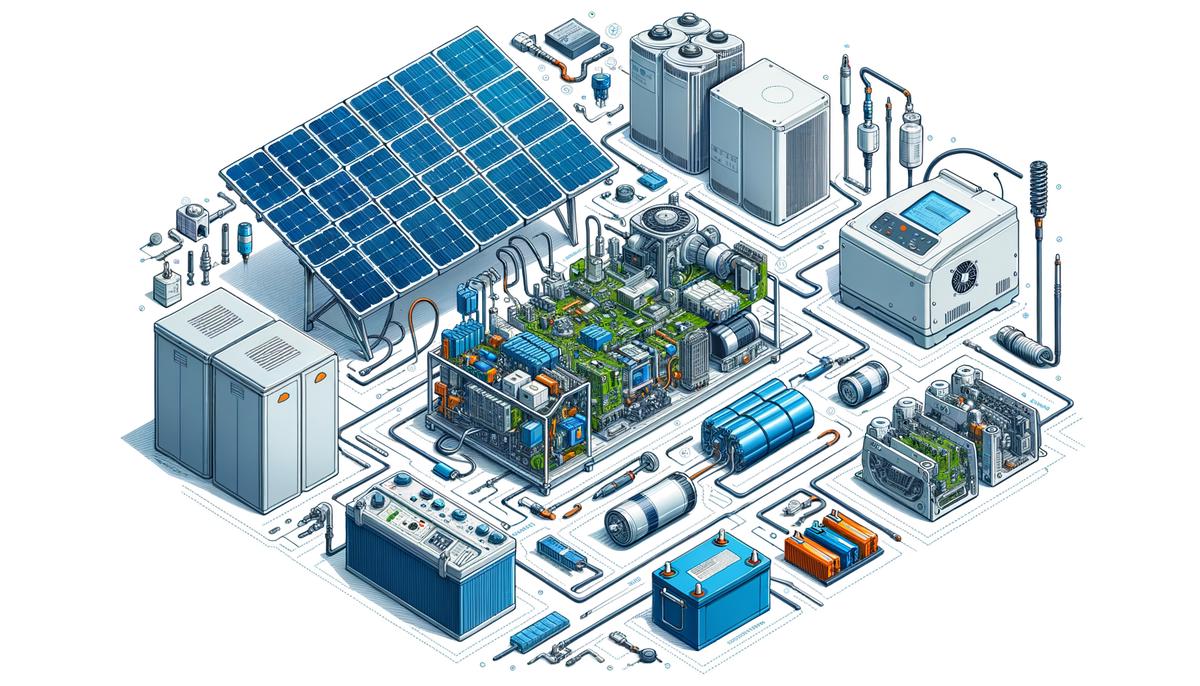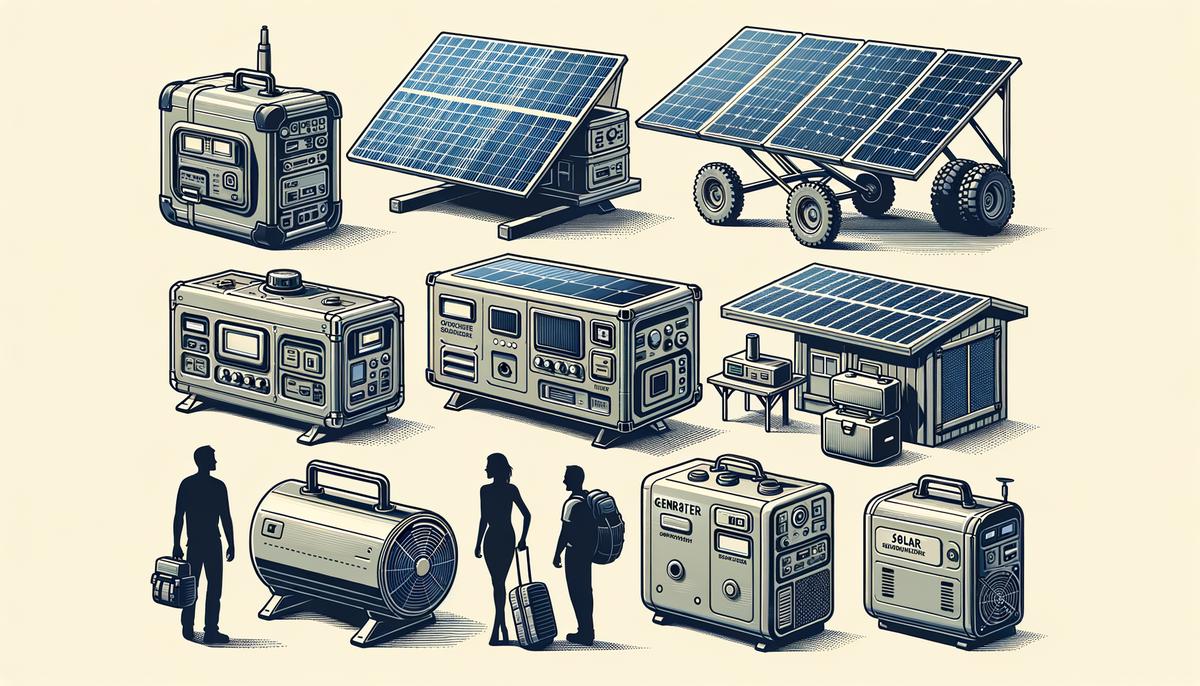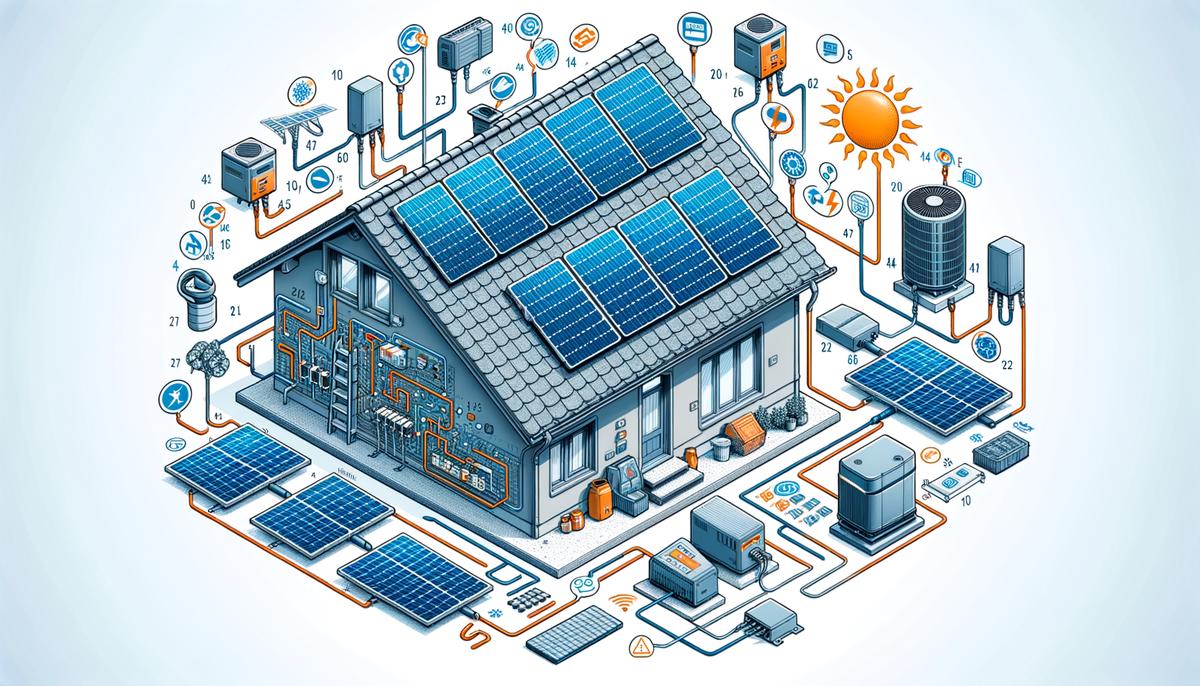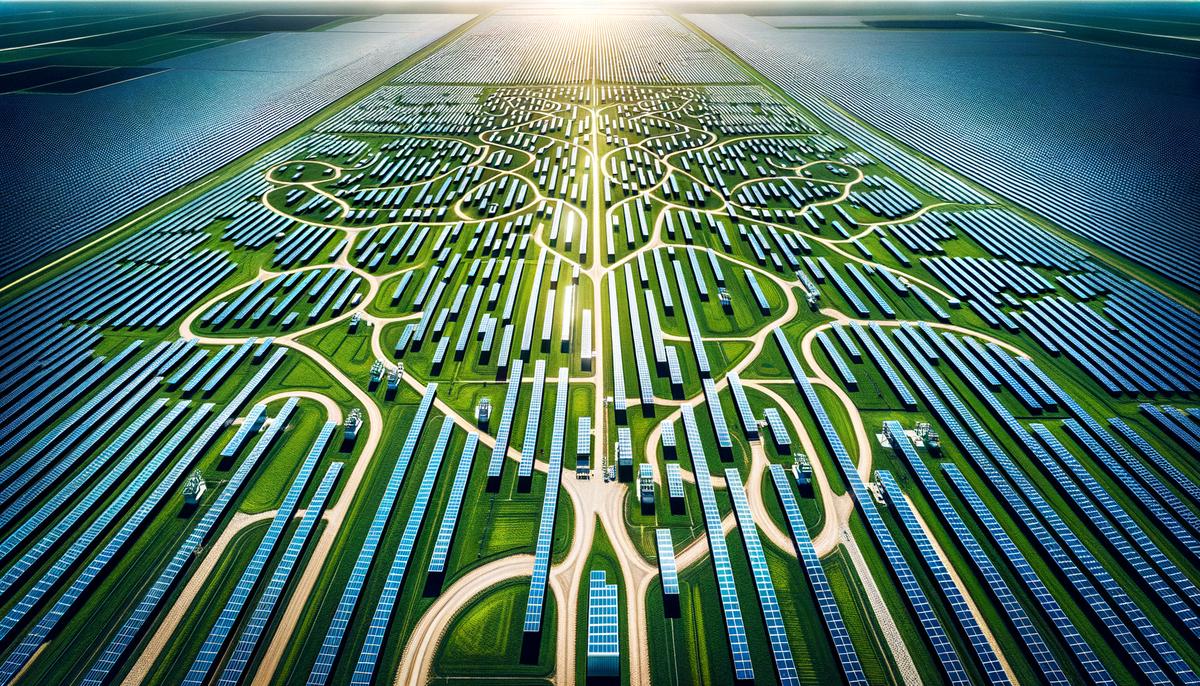Solar energy stands at the forefront of modern technological advancements, offering a clean and sustainable solution to our growing energy needs. This article explores the intricacies of solar power generators, from their basic components to their significant impact on both our environment and economy. As we unfold the layers of solar technology, we aim to shed light on how this renewable energy source is not just an alternative but a necessity for a sustainable future.
The Science of Solar Energy
Understanding how solar power generators convert sunlight into electricity begins with acknowledging the marvels of modern technology. At its core, the process is rooted in capturing sunlight and transforming it into an energy form that we can use in our homes and businesses, essentially harnessing the power of the sun to fuel our daily lives.
The central component of a solar power generator is the solar panel. These panels are composed of numerous smaller units called photovoltaic (PV) cells. Picture these PV cells as the primary agents for converting sunlight into electricity. They’re made from materials like silicon, which possesses a unique capability: when sunlight hits the silicon, it knocks electrons loose from their atoms. This reaction between the sunlight and the silicon generates a flow of electricity.
Once the PV cells have done their job in loosening electrons and causing them to move, this movement creates a direct current (DC) electricity. However, most homes and electronic devices run on alternating current (AC) electricity. This is where the solar power generator’s inverter comes into play. The inverter takes the DC electricity generated by the panels and converts it into AC electricity, making it compatible with the grid and usable for our daily needs.
Furthermore, a solar power system often comes with batteries for storing electricity. This ensures that the energy captured during sunny periods can be used at night or during cloudy days, enhancing the reliability and efficiency of solar power.
Moreover, another advantage of solar power generators is their capacity for scalability and adaptability. Panels can be installed to the scale necessary for each specific application, whether it be a residential home, a large industrial complex, or even a small portable device designed for personal use. This scalability highlights the versatility of solar power generators.
At its essence, when we talk about converting sunlight into electricity using solar power generators, we are discussing a clean, sustainable way to meet our energy needs. Through the intelligent engineering of PV cells, inverters, and storage systems, we welcome the sun’s boundless energy into our lives, moving closer to a future where our electric power is sourced responsibly and sustainably. Adopting solar technology not only aligns with a global imperative to combat climate change but also empowers us with greater energy independence.

Types of Solar Power Generators
While exploring the fascinating world of solar power generators, it’s essential to acknowledge the different types that have evolved to cater to a range of needs. Solar power generators come in various forms, each designed with a particular user in mind, ensuring that everyone from a household to a large corporation can find a solar solution that aligns with their energy requirements.
The first type to consider is the portable solar generator. This compact and transportable form of solar generator is a favorite among outdoor enthusiasts, campers, and those needing a reliable power source during emergency situations. Portable solar generators are lightweight, making them easy to carry. They can power small to medium-sized devices such as smartphones, laptops, and even some household appliances for a limited time. Their ease of use and the convenience of being able to generate electricity on-the-go make them an ideal solution for people looking to keep their devices charged without access to the grid.
Next up is the backup solar generator, which is typically more powerful than its portable counterparts. These generators are designed to serve as a home backup power source during outages. They are larger and have a higher capacity for electricity storage, making them capable of running essential household appliances such as refrigerators, water pumps, and lighting for extended periods. Backup solar generators are often installed permanently alongside existing electrical systems to provide automatic power supply when interruptions in grid electricity occur.
Moving on, there are standalone solar generators designed for off-grid living. These systems are ideal for remote locations where connecting to the grid is impractical or too expensive. Standalone solar generators are part of a more extensive system that includes larger arrays of solar panels and more significant battery storage to meet all the electricity needs of a household or even a small community. They are engineered to supply power for a wide range of applications, from lighting and cooking to heating and cooling, making sustainable living possible even in the most isolated areas.
Lastly, we have the hybrid solar generators. These systems combine solar power with other sources of energy generation, such as wind or diesel generators. Hybrid systems are beneficial in regions where sunlight may be insufficient for part of the year. By integrating different energy sources, these generators ensure a constant and reliable power supply, making them suited for critical applications that require uninterrupted power, including hospitals and data centers.
In summary, whether you’re an adventurer needing power in the wild, a homeowner seeking backup security, someone dreaming of living off-grid, or a facility manager needing unwavering reliability, there’s a solar generator designed to meet your needs. With advancements in solar technology continuing at pace, the variety and efficiency of solar generators are only set to increase, promising a brighter, cleaner future for all.

Installation and Maintenance
Switching our focus from the broad strokes of solar power fundamentals, we delve into the practical aspects involved in setting up and maintaining a solar power generator system. Transitioning to solar energy isn’t just about the panels gleaming on your roof; it’s a journey from installation to ongoing care that ensures resilience, efficiency, and longevity of your solar setup.
Initial Steps and InstallationEmbarking on the solar path begins with a detailed evaluation. Professional solar installers often start by assessing your energy needs, closely examining your past electricity bills to tailor a system that matches your consumption patterns. Next, they analyze your property’s sun exposure, considering factors like the roof’s angle, potential shadow-casting obstacles, and the optimal direction for the panels to ensure maximum sunlight capture throughout the day.
Choosing the right kind of solar power generator system hinges on your specific requirements—whether it’s for day-to-day home use, a supplemental power source, or for fully off-grid living in remote areas. The installer helps guide this decision, outlining the best options based on your goals.
Installation itself is meticulous but straightforward under expert hands. Rooftop systems are common, with panels securely mounted to withstand weather elements. Ground-mounted systems might be an alternative, especially if roof conditions are less than ideal. Wiring ties everything together, linking the panels to an inverter that transforms DC electricity into usable AC power for your home.
Permits and InterconnectionPermits are part of the process. Solar installations must adhere to local building codes and often require approval before construction begins. Installers typically handle this, but it’s crucial to understand any zoning regulations or homeowner association rules that could apply.
Interconnection agreements with local utility companies are another critical step for grid-tied systems. This ensures you can feed excess electricity back to the grid (and get credited for it) and draw power when your system isn’t producing enough.
Ongoing MaintenanceSolar power generators are celebrated for their minimal maintenance needs. However, routine checks are essential to keep them operating efficiently. Monitoring system performance becomes part of your daily routine, often facilitated by smartphone apps that connect to your system, alerting you to any irregularities.
Cleanliness of panels is paramount. Dust, debris, and even bird droppings can reduce your system’s effectiveness. A simple annual cleaning—more if you’re in particularly dusty areas or under heavy foliage—can make a significant difference. Professional cleaning services are available, although many homeowners choose to do this themselves with appropriate safety measures.
Inspecting connections and ensuring no wear and tear on wiring prevents potential issues. Though solar panels themselves can last 25 years or more, inverters might need replacement sooner, typically around the 10 to 15-year mark.
Warranty Claims and RepairKeeping track of warranties is also key. Panels and components come with warranties that protect against defects. Should performance falter, a good warranty will cover replacement or repair, offering peace of mind through decades of solar energy production.
In summary, while solar power generators promise a route to energy independence and contribute to a sustainable future, realizing these benefits requires thoughtful planning, responsible installation, and committed upkeep. From the initial setup to yearly maintenance and dealing with the minutiae like warranties and local regulations, each step is integral to ensure your solar power system remains effective, resilient, and beneficial over its lifetime—illuminating a path towards not just cleaner energy, but a robust commitment to our planet’s health.

Economic and Environmental Impact
When we dive into the influence of solar power generators on economies and ecosystems, it’s clear they’re significantly positive, but with complex layers. Economically, solar power generators create a substantial impact. They not only lower electricity bills for households and businesses but also inject life into job markets. The solar industry has been a hive of activity, providing employment in manufacturing, installation, maintenance, and sales roles. More jobs mean more spending, and more spending fuels economies – a win-win situation.
Moreover, transitioning to solar energy means countries can reduce their reliance on imported fuels. This shift supports energy security and trade balance, leading to stronger, more independent economies. Additionally, solar investments often lead to technological innovations and improvements in energy infrastructure, further boosting economic resilience.
From an ecosystem perspective, the benefits are just as pronounced. Solar power generators operate quietly and produce zero emissions during operation, making them a clean energy source that reduces air and water pollution. This starkly contrasts with fossil fuel power plants, which emit harmful pollutants and contribute significantly to the climate crisis. By decreasing greenhouse gas output, solar power generators play a pivotal role in combatting global warming and protecting against climate change’s adverse effects.
Furthermore, the land use for solar farms can be integrated with agriculture or livestock grazing, promoting biodiversity. Unlike large-scale fossil fuel extraction processes that often disrupt ecosystems through deforestation, habitat destruction, and pollution, solar farms have a smaller footprint and can coexist with natural or agricultural land uses.
However, it’s important to acknowledge some environmental concerns related to solar power systems, including the life cycle of solar panels. Production involves silicon and metals like silver and aluminum, sourcing which could potentially harm environments if not managed responsibly. At the end of their lifecycle, panels generate waste. Efforts to recycle materials from used panels are increasing, aiming to mitigate this impact.
Balancing economic growth with environmental protection, solar power generators offer a route towards sustainable development. They highlight an approach where technological advancements drive both economic prosperity and ecological health. As such, embracing solar energy technologies moves us closer to achieving a greener economy and a more resilient ecosystem. While challenges remain, particularly in optimizing material use and enhancing recycling processes, the trajectory towards cleaner, renewable energy sources like solar signifies a promising path forward for our planet.

Embracing solar technology represents more than just an investment in renewable energy; it signifies a commitment to fostering a healthier planet and securing a sustainable future for generations to come. Through the efficient conversion of sunlight into electricity, solar power generators illuminate the path toward reducing our carbon footprint and achieving greater energy independence. As we continue to advance in our understanding and implementation of solar technologies, we hold the key to unlocking endless possibilities for both economic growth and environmental preservation.

